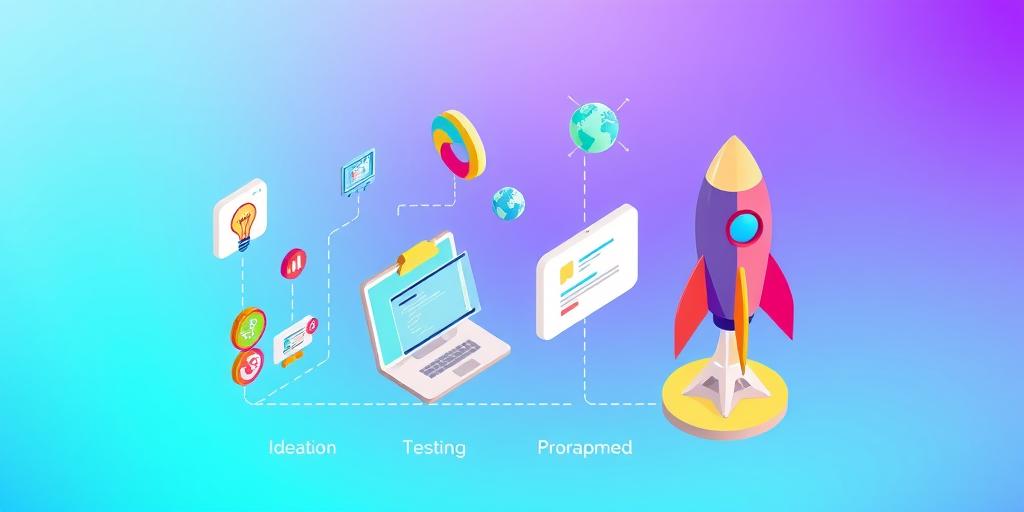Ever wondered what it takes to transform a simple idea into a thriving app? The journey from initial concept to a successful launch is fraught with challenges, but also brimming with rewards. This isn’t just another “how-to” guide; we’re diving deep into the nitty-gritty, sharing the secrets and strategies that separate the successful app developers from those who fade into the digital ether. Get ready to unlock the potential of your app idea and transform it into a reality that’s not only profitable but also impactful.
Idea Generation and Validation: The Foundation of Success
Before writing a single line of code, you need a solid idea. But not just any idea—a winning idea. This phase involves rigorous market research. What problems are users facing that your app could solve? What are their needs and pain points? This isn’t just about brainstorming; it’s about understanding your target audience. This is where long-tail keywords like “mobile app development process”, “app idea validation techniques”, and “target market analysis for mobile apps” become invaluable. Tools like Google Trends, competitor analysis, and even surveying potential users can provide invaluable insights.
Defining Your Unique Selling Proposition (USP)
What makes your app different? In a saturated market, a strong USP is vital. Does your app offer a unique feature, a superior user experience, or an innovative solution to an existing problem? Clearly defining your USP will help you focus your development efforts and effectively market your app. This understanding will help you shape your marketing campaign effectively, whether it’s through paid ads or organic growth.
Building a Minimum Viable Product (MVP)
Don’t aim for perfection from the outset; build an MVP first. An MVP includes only the core features necessary to test your app’s viability. This allows you to gather user feedback early, make necessary adjustments, and avoid wasting resources on features nobody wants. Think of it as a beta-testing phase on a smaller, more manageable scale, saving you both time and money in the long run. The key here is iterative development, incorporating feedback to continually refine the application.
Design and Development: Bringing Your Vision to Life
With your MVP planned, the next step is bringing it to life. This involves choosing the right technologies, building the user interface (UI), and ensuring a smooth user experience (UX). Consider the platform(s) you want to target (iOS, Android, web). Your choice will heavily influence the development process and technologies used. Long-tail keywords such as “iOS app development cost”, “Android app development tools”, and “cross-platform app development frameworks” become extremely relevant here. These will guide you through the intricacies of this crucial development phase.
User Interface (UI) and User Experience (UX) Design
UI/UX design isn’t merely about aesthetics; it’s about usability and intuitive navigation. A well-designed app is enjoyable to use, easy to navigate, and visually appealing. Invest in professional UI/UX designers or use intuitive tools that minimize the learning curve to enhance the user experience. Think “intuitive navigation”, “mobile app user interface design”, and “user-centered design principles”. These are essential components of a successful application.
Choosing the Right Technology Stack
Selecting the appropriate technology stack—programming languages, frameworks, databases—is crucial for your app’s performance, scalability, and maintainability. Consider factors like development speed, cost, and the skills of your development team. This is where phrases like “backend development languages”, “database selection for mobile apps”, and “best frameworks for app development” will come in handy during the development process.
Testing and Launch: Preparing for the Spotlight
Before launching your app, thorough testing is essential. This involves various stages, from unit testing (testing individual components) to integration testing (testing how different parts of the app interact) and user acceptance testing (UAT, where real users test the app). This meticulous process will uncover bugs and enhance your app’s stability and overall performance.
User Acceptance Testing (UAT) and Feedback
UAT is where you gather crucial feedback from your target audience. Their feedback is invaluable; it reveals any usability issues or unexpected problems. Use this feedback to make any necessary changes before the official launch. The importance of this feedback cannot be understated. Incorporating this feedback streamlines the launch process and enhances the likelihood of success.
App Store Optimization (ASO)
ASO is critical for getting discovered in app stores. This involves optimizing your app’s title, description, and keywords to improve its search ranking. ASO is often overlooked but is crucial to the overall success of your product launch. Key phrases such as “app store optimization techniques”, “mobile app keywords research”, and “ASO best practices” highlight the importance of this stage.
Post-Launch and Iteration: Continuous Improvement
Launching your app is only the beginning. Post-launch monitoring, user feedback, and ongoing iteration are essential for long-term success. Regularly review your app’s performance data, gather user feedback, and update your app with new features and improvements. This continuous improvement cycle guarantees your app stays relevant and competitive in the ever-evolving app market. Think of this as the continual feedback loop that ensures a product’s long-term viability.
Ready to bring your app idea to life? Don’t delay—start building your dream app today!

